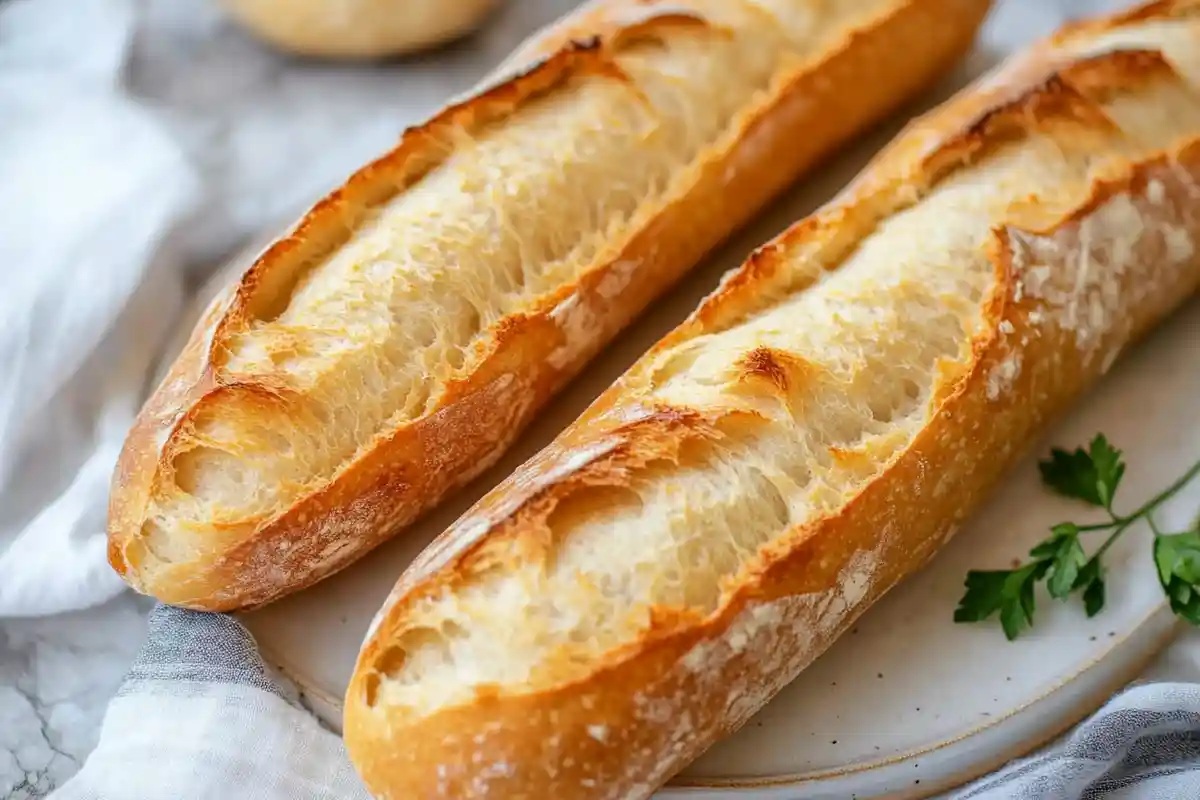Are you ready to dive into a world where you can transform leftover starters into mouthwatering loaves bursting with flavour? Indeed, this entire article will reveal how sourdough discarded French bread can bring a rustic flair and tangy twist to your table—minus the guilt of tossing out a precious batter. Throughout the following sections, we’ll cover everything from essential ingredients to ingenious serving suggestions. Let’s embark on this tantalizing baking journey right now!
If you’ve enjoyed learning about sourdough discard French bread, there’s so much more waiting for you in our collection of delicious recipes! Explore how sourdough discard can shine in other creative ways with these handpicked articles from our recipe vault:
- How to Make Perfect Sourdough Discard Hamburger Buns at Home – Soft, fluffy buns with a hint of sourdough tang. Perfect for your next burger night!
- Master the Art of Sourdough Bread Bowls: Recipes & Tips – Dive into the world of edible bread bowls and elevate your soup nights.
- Delicious Sourdough Discard Pancakes Recipe – Start your morning with fluffy, tangy pancakes made from your sourdough discard.
- Simple Sourdough Discard Crackers Recipe – Crispy, savory crackers that make the perfect snack or party treat.
Table of Contents
Introduction and Background to Sourdough Discard French Bread

What Is Sourdough Discard French Bread?
Defining Leftover Sourdough Starter
Leftover sourdough starter, often labeled “discard,” is the portion you remove from an active culture before refreshing it. Interestingly, many assume it’s unusable, yet this castoff remains brimming with flavor, albeit less active yeast-wise than freshly fed starter. Moreover, bakers commonly store it in the fridge, although some keep it at room temperature for spontaneous baking sessions.
The Essence of Classic French Bread
French bread takes center stage in countless European bakeries with its distinctive golden crust and airy crumb. But what’s so special about it, anyway? Well, it’s characterized by simplicity—just flour, water, salt, and sometimes a bit of yeast. However, the true hallmark of this loaf lies in its crisp exterior and soft, fluffy interior. If you’ve ever heard the crust crackle under a gentle squeeze, you already know its irresistible charm.
Merging Discard Starter with French Loaves
Believe it or not, the leftover starter can easily be blended with French bread dough, introducing a modest sour tang and boosting overall complexity. Combining the deep flavors inherent in discard with the classic structure of a French baton or baguette results in a crustier exterior and slightly richer taste. Although it may differ from purely sourdough bread—given the smaller amount of natural yeast—you’ll still experience a lovely whiff of acidity.
Why Make Bread Using Sourdough Discard?
Sustainability and Cost-Effectiveness
Have you ever felt guilty about dumping leftover starter into the trash? In that case, baking with discard feels like a genuine lifesaver—at least for your conscience! It minimizes food waste while stretching your flour investment. Furthermore, it’s an excellent technique for bread enthusiasts who love to experiment, since each batch can turn out just a bit different.
Unique Flavor Profile
Although sourdough discard French bread leans a tad milder than traditional sourdough, it still carries that trademark tang. Plus, it can give your loaves an extra depth that standard yeast breads may lack. Ultimately, that nuance evolves in tandem with your discard’s age or hydration, making every slice taste memorable. And let’s face it: who doesn’t crave a thick, crispy crust coupled with a subtle sour zing?
Gathering Ingredients and Tools for Sourdough Discard French Bread
Essential Ingredients for Discard Starter French Loaves
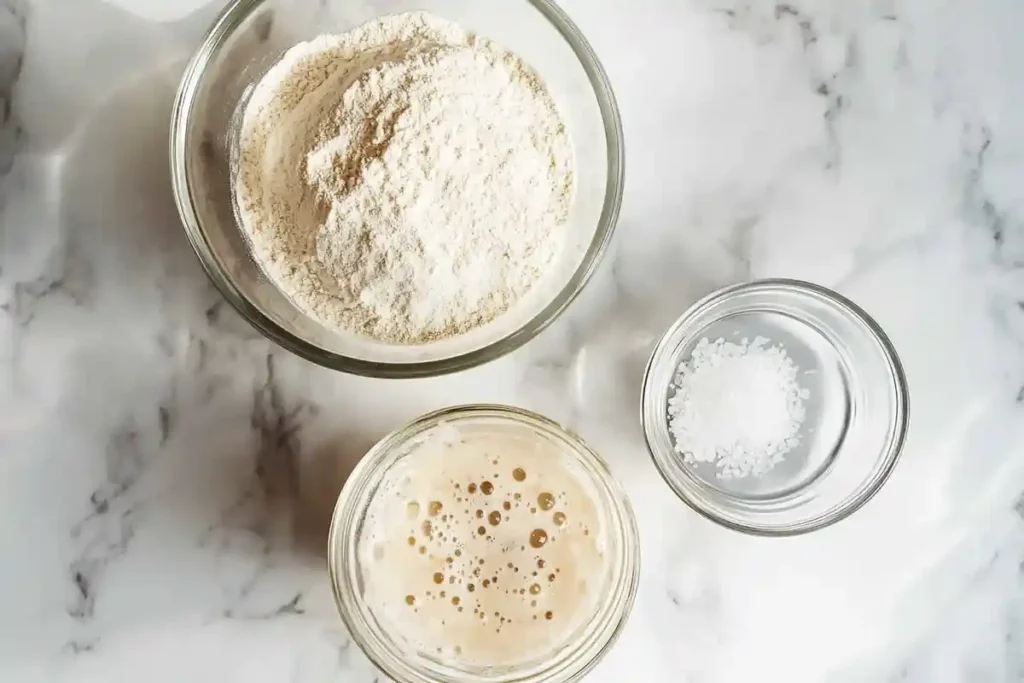
Flour Selection
First off, choosing flour can feel like striking gold when done correctly. Although wheat-based options might work, most bakers rely on all-purpose or bread flour because their protein content supports a sturdy structure. Moreover, higher protein flour produces a chewy interior and hearty texture. But, if you prefer a fluffier crumb, mixing in a bit of lower-protein flour might soften things up.
Water, Salt, and Optional Yeast
Water quality impacts flavor far more than you’d think, so it’s wise to stick with purified or filtered water whenever possible. Then, you’ll want to sprinkle in salt—like sea salt or kosher salt—since it controls fermentation speed and accentuates taste. Sometimes, especially if your discard starter seems weaker, tossing in a pinch of commercial yeast can jumpstart the rise. But, do remember that a tiny bit goes a long way, particularly if you’d like to maintain that subtle sourdough-like essence.
Sourdough Discard Quality
At the heart of this recipe is the leftover starter itself, which can be thick, runny, or somewhere in between. Just ensure it’s not harboring odd smells—like vinegar gone wild—or suspicious fuzzy patches. While a small layer of liquid “hooch” signals the culture’s hunger, it won’t hurt your dough if you stir it in. Furthermore, storing that leftover portion in an airtight container will keep it handy until you’re ready to bake.
Important Equipment
Mixing Tools
Preparing dough can be wonderfully hands-on, yet you might prefer using a stand mixer with a dough hook if manual kneading is too tiring. Then again, a simple bowl and sturdy spatula do the trick, especially if you’re aiming for a no-fuss approach. Ensure you’ve also got a dough scraper, which makes handling sticky mixtures and performing stretch-and-folds a breeze.
Proofing Containers
It’s not just about mixing—your dough needs a cozy growing environment. For that, a proofing basket (also known as a banneton) offers structure and shape to the rising dough. Alternatively, a bowl lined with floured cloth works in a pinch, providing you keep the environment warm and draft-free. Then, gently cover the top with either plastic wrap or a damp towel to retain moisture.
Baking Equipment
Finally, grab a baking stone or sturdy sheet pan for that perfect bake. A baking stone, especially preheated, encourages a crispier crust by distributing heat evenly. And don’t forget a sharp blade, known as a lame, for scoring your loaf—scoring helps release steam as it bakes and encourages an airy interior. Meanwhile, an oven thermometer ensures that the temperature matches the dial, since a few degrees can make all the difference between ho-hum and spectacular results.
Step-by-Step Guide to Making Sourdough Discard French Bread
Preparing the Dough
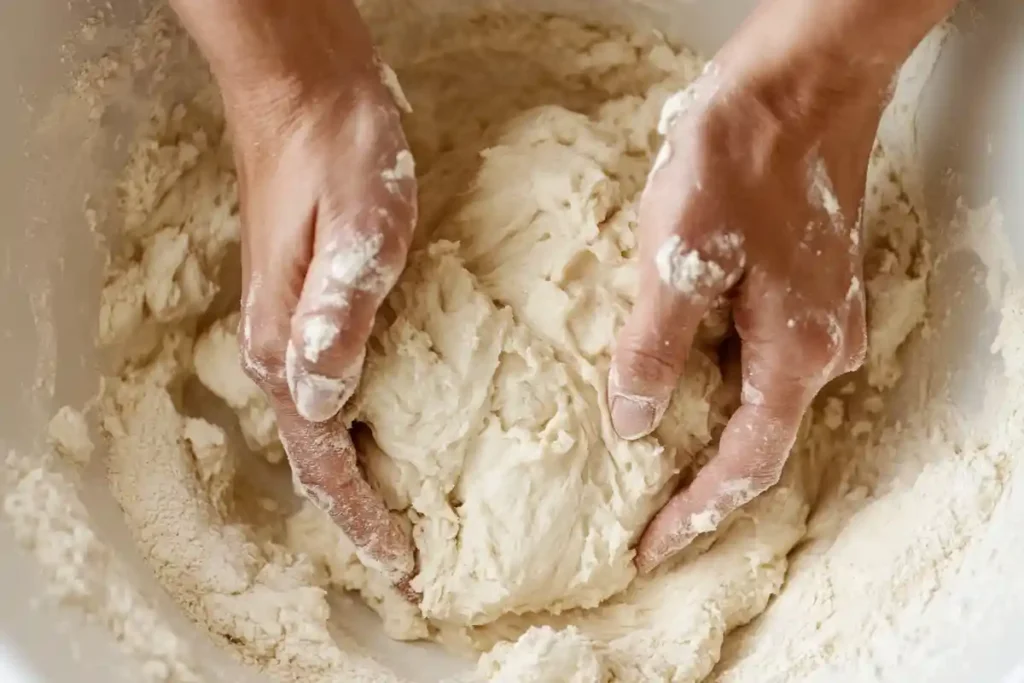
Initial Mix and Autolyse
Mix your flour, water and discard starter in a mixing bowl. Stir gently until the ingredients form a shaggy, somewhat sticky mass. Afterward, cover the bowl and let the dough rest for around 20–30 minutes—this pause is called the autolyze period, and it helps gluten strands jump-start without much effort. Essentially, you’re letting time and hydration do the heavy lifting, so that the dough feels smoother when you resume.
Incorporating Salt (and Optional Yeast)
Once the autolyze is done, scatter your measured salt across the dough. If your sourdough discard appears less bubbly or you’re crunched for time, toss in a sprinkle of commercial yeast. Then, mix thoroughly, ensuring the salt and yeast (if added) disperse evenly. It helps with consistent fermentation because each portion of dough needs a fair share of seasoning and leavening.
Kneading vs. Stretch and Fold Technique
There are two common approaches for working sourdough discard French bread dough. First, you can knead by hand: push the dough away with the heel of your palm, fold it back, and rotate. Alternatively, try the stretch-and-fold method, which gently tugs one side up before folding it inward. Repeating these motions, while rotating the bowl every so often, develops structure minus the sweat. Both methods get the job done, so pick whichever feels most intuitive.
Fermentation and Proofing
Bulk Fermentation
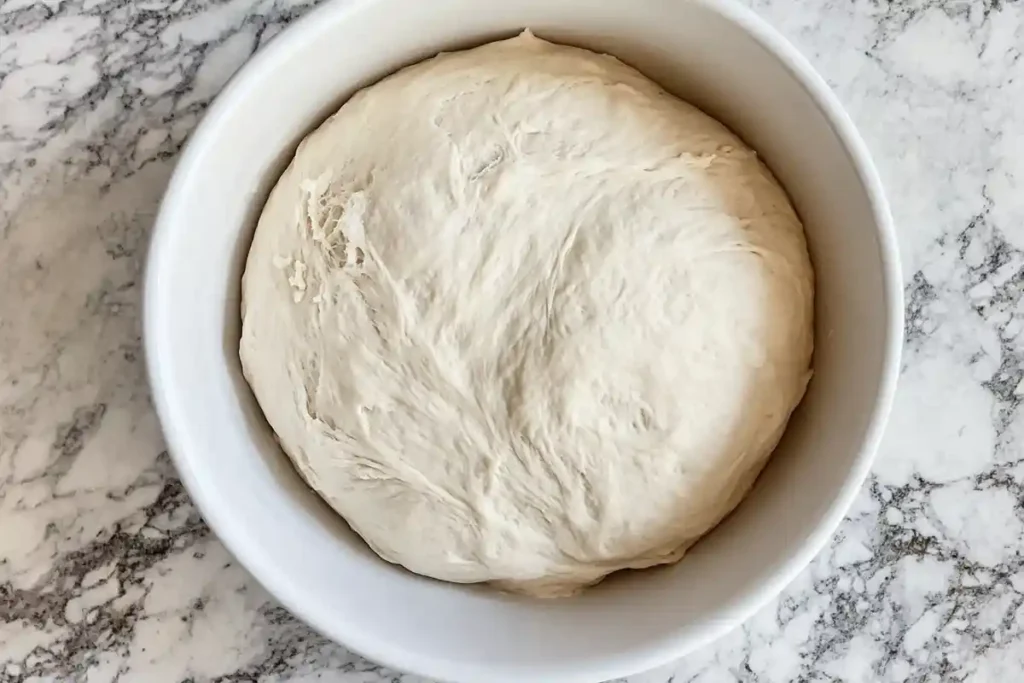
After your dough feels suitably elastic, shape it round and leave it in a bowl for bulk fermentation. Cover everything and let it sit in a cozy spot—somewhere around 70–75°F (21–24°C)—for a couple of hours. You’ll notice the dough swell and occasionally see a few bubbles on its surface. Periodically, consider a quick set of stretch-and-folds to strengthen the gluten network further.
Shaping Your Loaves
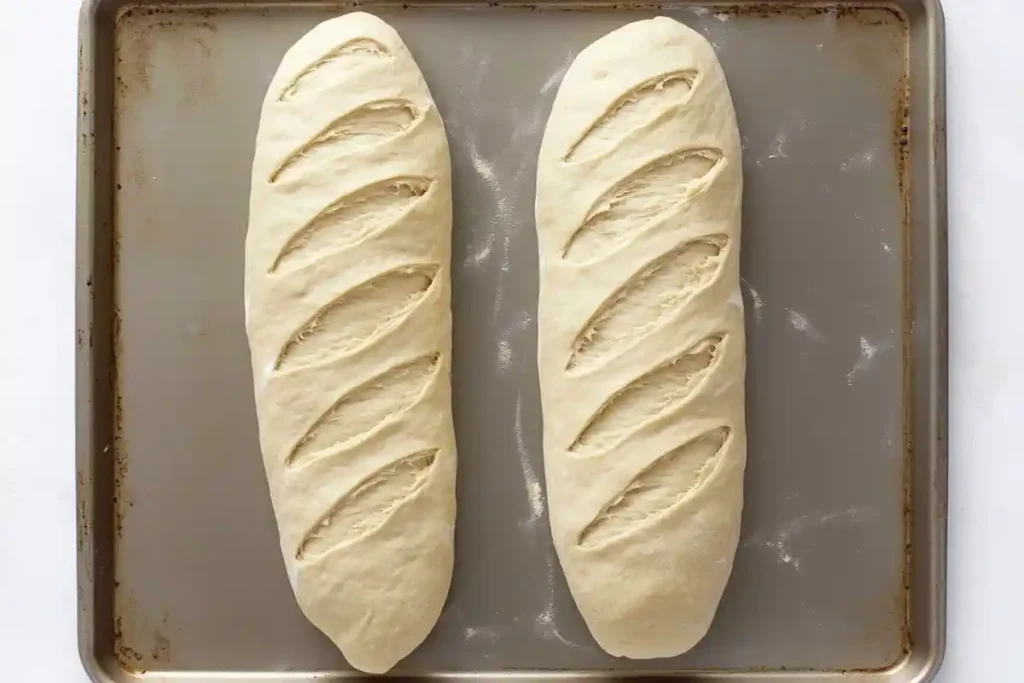
You’re good to go when the dough has doubled or nearly doubled. Tip it onto a lightly floured surface, then divide if you prefer smaller baguettes. Flatten the dough into a rectangle, fold the edges inward, and roll it into a log-like form for that classic French shape. Press lightly on the seam to seal, ensuring you achieve a decent surface tension for a taut exterior.
Final Proof
Place your shaped loaves seam-side down in a floured proofing basket or on parchment-lined baking sheets. Finally, cover them to keep the dough surface from drying out. Let the dough rest for 45–60 minutes (or until it bounces back slowly when poked), although cooler kitchens might require a bit longer. Proper proofing allows the bread to expand so it won’t burst unpredictably in the oven.
Baking and Cooling
Oven Preheating and Steaming
Preheat your oven to about 450°F (230°C). Slip a rimmed tray or cast-iron skillet onto a lower rack. Just before baking, add hot water to this vessel—it instantly generates steam, which promotes oven spring and a lovely, crackly crust.
Scoring Techniques
With a lame or very sharp knife, quickly slash each loaf at a shallow angle. These cuts enable the bread to expand along those lines, reducing the risk of random blowouts. Aim for two or three diagonal scores on a standard baguette, or a few parallel lines on a shorter bâtard.
Baking Duration and Cooling Tips
Pop your loaves onto the preheated baking stone or baking sheet. Check them after about 20 minutes, rotating if one side browns faster. The crust should develop a deep golden colour—if you’re uncertain, tap the bottom of a loaf to hear a hollow sound, indicating it’s baked through. Finally, cool the loaves on a wire rack to maintain a crispy underside. When you slice it, expect a mildly tangy aroma and a satisfying crackle around the edges—proof that your discard starter just found its second life in an irresistible French bread loaf!
Tips, Variations, and Serving Suggestions for Sourdough Discard French Bread
Tips for Perfect Discard Starter French Bread
Optimal Hydration Levels
Feel free to tweak the water quantity when experimenting with leftover starter if your dough seems unmanageably sticky or too stiff. Indeed, slightly higher hydration can produce large, airy holes and a crispier crust. Yet watch out—too much water causes the dough to spread rather than rise. Therefore, keep a small bowl of extra flour on standby if you need to dust your hands or counter.
Flavor Enhancements
Are you feeling adventurous? Then try stirring fresh herbs, roasted garlic, or even bits of olives into your dough. Consequently, these accents transform sourdough discard French bread into a gourmet masterpiece. You could adjust salt content for a bolder bite or sprinkle a few seeds before baking. Because variety spurs culinary creativity, you can happily combine many add-ins without compromising the loaf’s basic structure.
Adjusting Baking Times
If your crust browns too rapidly, reduce the oven temperature slightly or set a loose foil tent over your loaves partway through. Conversely, if it remains too pale, simply allow a few more minutes in the hot oven. Even subtle changes, such as rotating or shifting pans between racks, can influence the final result. Hence, watch the crust’s color carefully, and don’t hesitate to adapt mid-bake!
Popular Variations
Whole Wheat or Multigrain Discard Starter Bread
Looking to add extra nutrition or a nuttier flavor? Replace a portion of the white flour with whole wheat or multigrain blends, which yield a heartier crumb and slightly denser texture. But remember: grains absorb water differently, so you may need to fine-tune your hydration. Experimentation paves the path to success—try a 75% white flour to 25% whole wheat ratio for a balanced, wholesome taste.
French Baguettes vs. Boules
Sometimes, shaping your loaf forms a crucial part of the experience. Aim for slender baguettes if you’re craving that classic, elongated look. On the other hand, a rustic boule offers a compact round shape, perfect for tear-and-share dining. Whichever path you choose, the flavour remains captivating, and the crust-to-crumb ratio shifts slightly depending on the selected shape.
Serving Suggestions
Classic French Pairings
Since a warm loaf from the oven practically begs for accompaniments, how about slathering on salted butter, cheese, or sweet jam? Without a doubt, a dab of fruit preserve contrasts beautifully with the bread’s tang. Or dipping thin slices into hearty soups and stews soak up savory goodness and lend a satisfying bite.
Storage and Freshness
One inevitable challenge is maintaining that crisp crust after day one. Thus, storing loaves in a paper bag or breathable container can help preserve texture. If the crust softens, you can always revive leftover slices by toasting or briefly reheating. And if you’re not planning to eat the entire loaf soon, pop it in the freezer. Then, warm it at a low oven temperature to recover that delicate crunch whenever you’re in the mood.
FAQs and Conclusion for Sourdough Discard French Bread
Do French bakers use sourdough?
Absolutely! Even though commercial yeast took over a big slice of industrial baking, countless French bakers still cherish pain au levain—a traditional sourdough bread. Even though modern methods sometimes shorten production times, many French artisans cling to old-world techniques because the depth of flavor remains unmatched. After all, that time-honored tang is part of France’s baking heritage.
What is the difference between sourdough bread and sourdough discard bread?
The main distinction lies in the starter’s activity level. Conventional sourdough bread relies on a fully fed, bubbly culture brimming with wild yeast and bacteria. Meanwhile, sourdough discard bread incorporates leftover starter that wasn’t recently fed, meaning it may have fewer active yeasts. Nonetheless, the discard still carries that trademark tang, albeit sometimes milder, and it can boost the flavor and texture of French-style loaves.
What do the French call sourdough bread?
In France, sourdough bread is generally referred to as pain au levain. Levain indicates a naturally fermented leaven, contrasted with commercially produced yeast. Interestingly, certain regional variations or local bakeries might label it differently, but pain au levain is the all-encompassing term for a loaf created with a sourdough culture.
Why do you throw away sourdough discards?
Remove part of the old mixture when feeding your sourdough starter so the new flour and water can keep fermentation balanced. This “discarding” process prevents the culture from ballooning out of control. However, rather than tossing it, thrifty bakers collect the leftover starter and reimagine it in recipes like pancakes, waffles, or the Perfect Sourdough Hoagie Rolls. That way, you waste less food and still reap delicious benefits.
Conclusion
Summary of Key Points
From flour choice and proper hydration to shaping techniques and creative add-ins, making sourdough discard French bread invites you to unlock the rustic wonders hidden in every starter scrap. Although it may differ slightly from full-fledged sourdough, the leftover culture still imparts a lovely tang and aromatic depth.
Encouragement to Experiment
Don’t be shy about tweaking flours, water levels, or add-ons. Indeed, each baking session evolves into a mini science experiment that your taste buds will appreciate! You’ll grow more attuned to the dough’s needs with every loaf, learning how temperature, time, and technique unite perfectly.
Final Thoughts
Ultimately, embracing sustainability while savoring fresh bread feels pretty magical—especially when you realize you’re transforming what some see as kitchen waste into something downright luxurious. So, why not whip up another batch with that leftover starter? Because who knows: it could become your next beloved family staple, bringing the warmth of old-world French bakeries to your kitchen.

